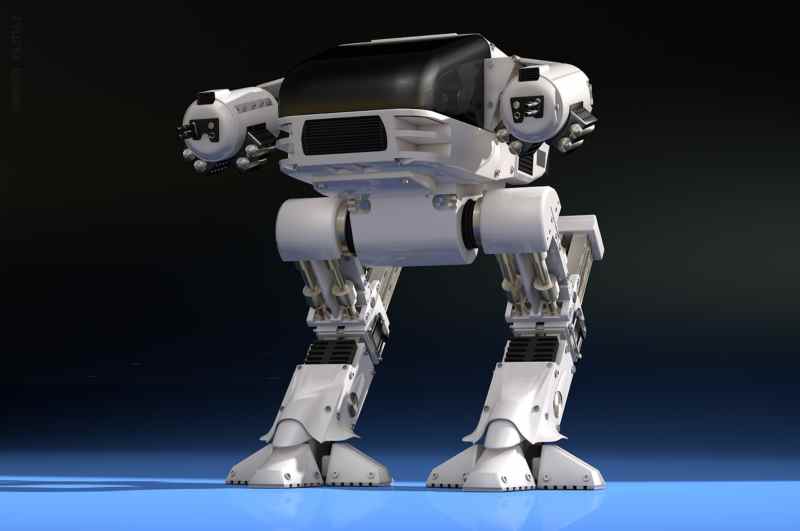Many workplaces are hesitant to adopt robots, mostly due to the fear of how their employees will respond. People have this looming fear that robots or some other form of artificial intelligence will someday take over their jobs.
While robots can and will change many aspects of a workplace, these changes aren’t something to dread. Embracing robots for their advantages can drastically improve the workplace, and while your employees may be skeptical at first, the proof will come in the application.
6 Ways Robots Can Change Workplace in Future

1. Customer Service Improves
Great customer service is what separates a business from its competitors. Many businesses struggle to provide constant and effective customer service to people with comments or questions, let alone people who are seeking service before they decide to become a customer.
Manpower is limited, and a priority system evolves that leaves some people waiting days to hear back from a representative.
By automating certain tasks and allowing robots to perform the routine functions of a workplace, more manpower hours become available. Robots don’t require a salary, so companies can utilize employees to their fullest extent.
This means keeping a larger customer service team, preventing the former team from feeling overburdened by their work. Your service staff will feel more united with their team, creating better workplace camaraderie while serving customers more effectively.
2. Productivity Skyrockets
Workplaces that constantly lag behind don’t have great cultures. Everyone feels like they’re constantly being swallowed by quicksand, only to barely lift themselves out at the very last second.
When there’s too much to do, employees begin to resent their jobs. Work feels like abuse when pile after thankless pile of to-do sheets start popping up, and employees are less likely to have a favorable opinion of their employers.
With robots taking over menial tasks, it’s easier to get other things done. Specifically, there’s much more time to focus on tasks that absolutely need to be completed by a human.
Nobody will feel like they’re working two jobs. They’ll be able to measure their progress and effectively manage their workload without juggling. Employees are less likely to feel burned out and the savings that come from application of robots can later on be directed towards salary increases, bonuses or employee benefits programs.
3. Safety Increases
Some jobs are perfectly safe, but others require employees to work in hazardous environment. Luckily, robots can now perform various tasks in the most dangerous settings. They can be designed to work in poor-lit rooms, tight spaces, underground or at heights.
They are capable of lifting heavy objects or working with life-threatening chemicals. Robots may be programmed to perform a number of chores and due to their precision they are less likely to get damaged or cause any harm.
By using robots to carry on the most dangerous tasks, employers can guarantee a much safer place to work for their employees who will be less likely to put their lives in danger or fall victim to work-related accidents.
The application of work cells, such as fencing, arc glare shields and dividers successfully protects employees from fire, debris, harsh light or chemicals.
4. Mood and Morale Go Up
With menial or dangerous tasks being handled by robots, employees have a lot more freedom. Not only can they spend more time effectively completing tasks that require more attention to detail, they can also spend some time celebrating their successes. Rather than having to rapidly move from one task to the next, employees are going to get some time to appreciate and reflect on a job well done.
Celebration as a core part of workplace culture makes people love their jobs. They feel valued when they have some type of tangible representation that they work they’ve done is appreciated.
Combine this culture of celebration with perks for productivity, an employee wellness program, and individual recognition for growth or accomplishments, and you’ve created a perfect workplace culture.
5. Employees Get Educated
One of the things that many workplaces don’t consider before adopting robots is the way that robots change the roles of their current employees. Robots don’t necessarily eliminate jobs – robots need operators who understand how to maintain and monitor them. By giving this job to your current employees, you’re retaining them with a greater purpose.
Education is among the best gifts and employer can give their employees. You’ll need to train your employees to oversee their robots, helping them learn new skills on the job.
They’re building their personal arsenal of tools and qualifications when they’re learning to manage these robots, advancing both their personal and professional growth. Become a workplace that prioritizes tech education.
6. Company Perception Grows
Many companies are now looking into adopting robots and artificial intelligence into their production process. Nevertheless, application of these technological advancements is connected with increased initial cost and not everyone can afford such workplace revolution. It is calculated that robots can bring significant savings to a company in a long run with their quick return of investment rate.
When a company applies new technologies that not only improve employee satisfaction, but also lower product pricing, it immediately gets recognition for being a progressive firm that values constant development for the benefit of its staff and customers. Innovative process automation will generate much needed buzz that consequently will boost company’s position on the job market.
If your employees are hesitant to get on board with the idea of adopting some workplace robots, simply explain the wealth of benefits they’ll see as soon as the robots get to work. Robots will make life better for everyone, and they’ll be thankful when they come to work.
Author Bio: Rachel is a mother of 2 beautiful boys. She loves to hike and write about travelling, education and business. She is a Senior Content Manager at Populationof an online resource with information about demographic statistics
















